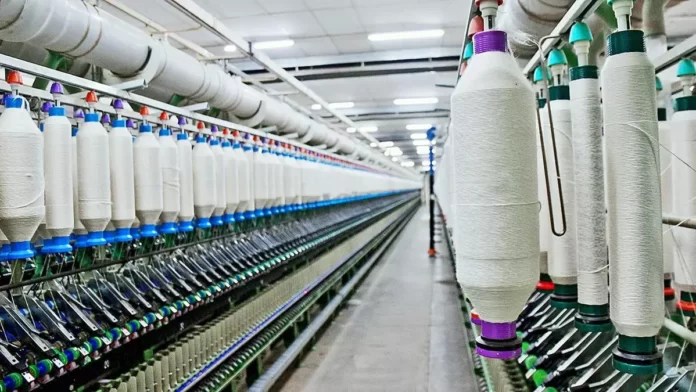Pakistan’s textile sector recorded a 5.63 percent year-on-year increase in exports during the first quarter of the current fiscal year (2025-26), reflecting improved performance in key value-added categories such as knitwear, bedwear, and readymade garments.
According to the latest data released by the Pakistan Bureau of Statistics (PBS), total textile exports during July–September 2025-26 reached $4.774 billion, up from $4.520 billion in the same period of 2024-25.
Knitwear emerged as a major growth driver, with exports rising 12.21 percent to $1,423.800 million, compared to $1,268.908 million last year. Bedwear followed with a 7.28 percent increase, reaching $852.867 million from $794.972 million, while exports of readymade garments grew 6.07 percent, totaling $1,057.287 million against $996.781 million the previous year.
Among intermediate goods, cotton yarn exports surged 12.22 percent to $182.447 million, compared to $162.579 million last year, while other yarns climbed 6.17 percent to $9.095 million from $8.566 million. The export of tents, canvas, and tarpaulin also showed robust growth of 37.93 percent, rising from $28.796 million to $39.717 million.
Slight gains were also recorded in art, silk, and synthetic textiles (up 1.62 percent to $98.042 million), made-up articles excluding towels and bedwear (up 8.26 percent to $206.814 million), and other textile materials (up 1.58 percent to $190.180 million).
Conversely, cotton cloth exports declined sharply by 14.21 percent, falling to $449.276 million from $523.663 million, marking one of the few weak spots in the otherwise positive quarterly performance.
On a year-on-year (YoY) basis, textile exports in September 2025 dipped marginally by 1.99 percent, totaling $1,572.920 million against $1,604.856 million in September 2024. However, on a month-on-month (MoM) basis, exports rose 3.23 percent, up from $1,523.635 million in August 2025, indicating a recovery in export momentum toward the end of the quarter.
The data underscores the continued strength of Pakistan’s value-added textile segments amid global demand shifts, even as basic textile categories such as cotton cloth remain under pressure.




